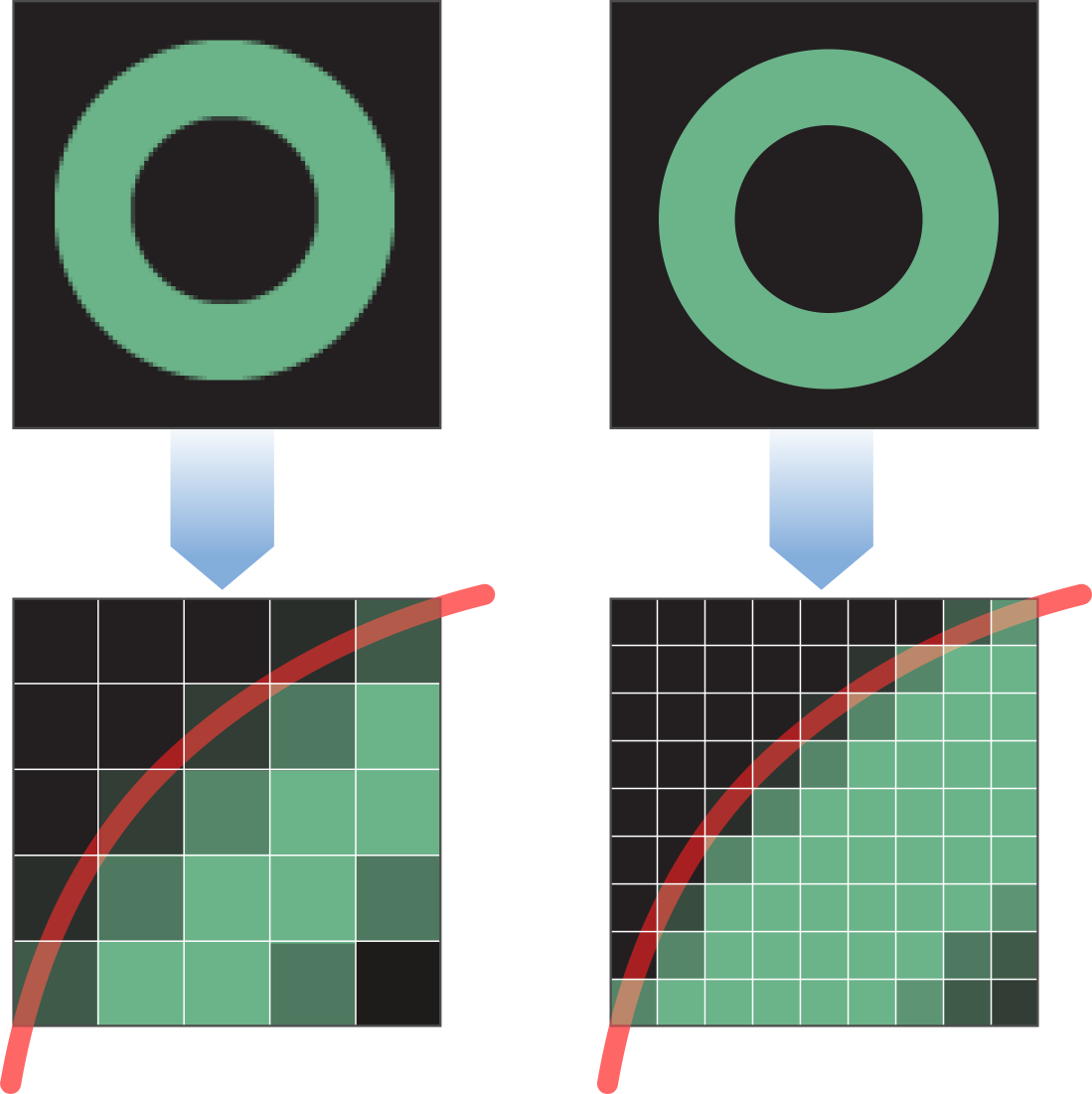pixels
The pixel is a picture element,the basic unit of colour on a computer display or in a computer image.The physical size of a pixel depends on how you've set the resolution for the display screen. If you've set the display to its maximum resolution, the size of a pixel will equal the physical size of the dot pitch (let's just call it the dot size) of the display. If, however, you've set the resolution to something less than the maximum resolution, a pixel will be larger than the physical size of the screen's dot (that is, a pixel will use more than one dot).The specific colour that a pixel describes is some blend of three components of the colour RGB. Up to three bytes of data are for specifying a pixel's colour, one byte for each major colour component.
Picture/image Resolution
Resolution is the quality of the image. As the resolution goes up, the image becomes more clear. It becomes sharper, more defined, and more detailed as well there’s more information in the same small space. Your computer, laptop and your smartphone (if you’re lucky enough to have one) both have image resolutions. There is a certain number of dots in the space that is the screen. Put even more simply, the more dots you jam into the width and height of the screen, the higher the resolution. The less dots, the lower the resolution.
If you remember those old computer monitors from the 90's, you'll see how blurry the images were. Till now, most basic laptops and LCD screens have a much higher resolution. You get more detail in the space of your screen because there are more dots to display the details of the images. That’s all resolution is. It’s the number of dots (i.e. pixels) in any given space.
Intensity/ pixel values and histograms
In an image , the histogram of an image refers to the pixel intensity values. This histogram is a graph showing the number of pixels in an image at each different intensity value found in that image. For an 8-bit Gray scale image there are 256 different possible intensities, and so the histogram will graphically display 256 numbers showing of pixels amongst those Gray scale values. Histograms can also be taken of colour images either individual histograms of red, green and blue channels can be taken, or 3D can be produced, with the three axes with the red, blue and green channels, and brightness at each point representing the pixel count. The exact output from the operation depends upon the implementation it may simply be a picture of the required histogram in a suitable image format, or it may be a data file of some sort representing the histogram statistics.


No comments:
Post a Comment